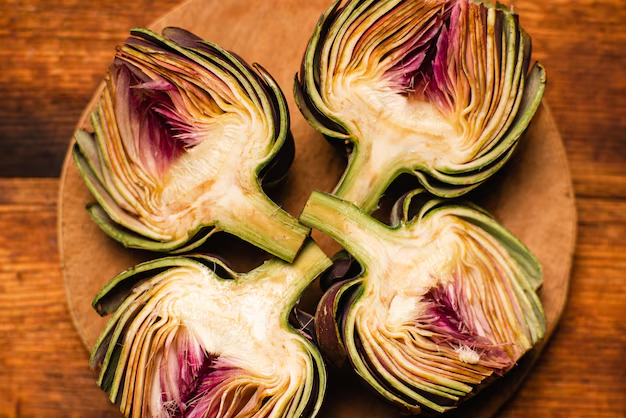Maximizing the Freshness of Artichokes: A Refrigerator Guide
Have you ever found yourself puzzled by how long artichokes really last in the refrigerator? You're not alone. This tricky vegetable, known for its unique appearance and delicious taste, can be a bit of a mystery when it comes to proper storage. Understanding how to store artichokes can significantly enhance their shelf life, preserving both their flavor and nutritional value. Let's take a deep dive into the artichoke storage secrets!
🌿 Understanding Artichokes: What Determines Their Shelf Life?
Artichokes are not just any vegetable. Their shelf life primarily hinges on several factors:
- Harvest and Initial Freshness: The longevity of artichokes starts with their initial freshness and how they were handled post-harvest. Fresher artichokes naturally have a longer potential shelf life.
- Temperature and Humidity: Artichokes are sensitive to humidity and require the right temperature conditions to maintain their quality.
- Storage Methods: The way artichokes are stored, whether whole, cut, or cooked, impacts how long they will stay fresh.
🌱 Selecting the Freshest Artichokes
Before we even consider storage, selecting the freshest artichokes is your first line of defense against spoilage. Here’s what to look for:
- Color and Texture: Choose artichokes that are a good green color with tight, firm leaves. They should feel heavy for their size.
- Squeaky Sound: Gently squeeze the artichoke. If it squeaks, it’s fresh.
- No Brown Spots: While slight discoloration on the tips can be acceptable, avoid artichokes with extensive brown or black spots.
🥶 How Long Can Artichokes Last in the Refrigerator?
When stored correctly, artichokes can last quite a while in the refrigerator. Here's a rough guide on their shelf life based on their state:
Whole Artichokes
Refrigerator Storage Duration: Approximately 5-7 days
Storage Tips:
- Wrap artichokes in damp paper towels to maintain necessary humidity levels.
- Place them in the vegetable drawer of the refrigerator to protect them from the cold air.
Cut Artichokes
Refrigerator Storage Duration: About 1-2 days
Storage Tips:
- After cutting, immerse them in water with a splash of lemon juice to prevent browning.
- Store in an airtight container to retain moisture and prevent odors.
Cooked Artichokes
Refrigerator Storage Duration: Up to 5 days
Storage Tips:
- Allow them to cool completely before transferring to an airtight container.
- Label the container with the date of storage to keep track.
🍽️ Handling Artichokes: Prepping and Cutting
How you handle artichokes from the moment you bring them home affects their longevity:
- Washing: Rinse under cold water to remove any dirt or pesticides.
- Trimming: Trim the stem and snip the pointed leaf tips.
- Cooking Advances: Decide whether you are prepping them for later cooking or immediate use.
Avoiding Common Mistakes
- Avoid Storing Near Ethylene-Producers: Fruits like apples and pears produce ethylene gas which can hasten spoilage.
- Avoid Wet Storage Methods: Too much moisture accelerates decay, so ensure paper towels are just damp, not wet.
🗓️ Handy Storage Summary
Here’s a quick reference to help you remember the best practices for artichoke storage, with a touch of emoji flair for clarity:
| 🌿 Stage | 🥶 Fridge Duration | 🗂️ Key Tips |
|---|---|---|
| Whole Artichokes | 5-7 days | Damp paper towels, veg drawer |
| Cut Artichokes | 1-2 days | Airtight container, lemon water |
| Cooked Artichokes | Up to 5 days | Cool before storing, labeled airtight container |
💡 Extending Shelf Life: Useful Techniques
Freezing Artichokes
While refrigeration is standard, artichokes can be frozen for longer storage. Here’s how to do it correctly:
- Blanch First: Briefly boil cut artichokes and then immerse them in ice water.
- Dry and Store: Pat dry and place them in airtight bags before freezing.
- Label with Date: Always label the freeze date to keep track.
Fermenting Artichokes
For a culinary adventure and preservation method, consider fermentation:
- Slice artichokes thinly and immerse them in a salted water solution.
- Store in jars with tight-fitting lids for several weeks at room temperature.
- Once fermented, refrigerate for up to several months.
❓ Recognizing Spoiled Artichokes
It’s crucial to recognize when artichokes are beyond their prime. Keep an eye out for:
- Brown or Black Spots: Discoloration usually indicates spoilage.
- Off Smell: A sour or unpleasant smell is a warning sign.
- Texture Changes: If the leaves feel slimy or overly soft, it’s best to dispose of them.
🥄 Creative Uses for Artichokes Nearing Their End
Even if artichokes approach the end of their fridge life, don’t count them out. Consider these creative applications:
- Artichoke Soups and Purees: They are perfect for soups, where a day or two of extra ripeness can add depth of flavor.
- Artichoke Dips: Transform artichokes into creamy, delicious dips.
- Roasted Artichokes: A little lemon and olive oil can revive tired artichokes through roasting.
📝 Final Insights
Proper storage of artichokes can significantly enhance your culinary experiences. Comprehensive knowledge of their storage needs will help reduce waste, save money, and ensure you enjoy every tasty bite these delightful vegetables have to offer.
Remember, freshness starts at the selection process and is preserved through mindful handling and storage. Whether you're cooking up a storm or keeping it simple, this guide arms you with the know-how to keep artichokes fresh and tasty!
Empower your kitchen skills and watch your stored artichokes thrive. Here's to longer-lasting and delicious artichokes! 🌟
